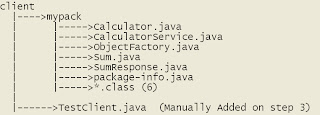Assume the following classes
program
|-------->Test.java
|--------->Demo.java
Test.java
----------
public class Test{}
Demo.java
-------------
public class Demo
{
public static void main(String s[])throws Exception
{
Class.forName("Test"); //line 1
Test t=new Test(); //line 2
}
}
Observation
ClassNotFoundException
---------------------------------
You keep only line 1(comment line 2),and compile and execute Demo.java,(Donot compile Test.java)it will give you ClassNotFoundException
What ever String you are passing in Class.forName("---") is a class name,and it should be there
solution: Compile both the java files and then execute Demo class
NoClassDefFoundError
--------------------------------------
Keep Only line 2(comment line 1),and compile and Execute Demo.java.The program successfully compiles & Executes.It is because,when ur class Demo is using class Test,then No need to compile Test.java,when you compile Demo.java,it auto compiles Test.java
So when will I get Error? Just remove . from ur classpath & recompile
In classpath generally we add ;. at last.
This is because,when the JVM looks for the classes,it looks in classpath and when it sees . , it understands that it has to look in the current working directory also.
But if you remove . from classpath,then here auto-compilation will not take place,means you have to compile all the classfiles using javac *.java.
Even after you have compiled both the classes,if u try to execute it,it will still show you NoClassDefFoundError,because u have removed . from classpath variable
Now comment both line1 & line 2,and again recompile only Demo.java
Compilation will be successful,but While execution it will give you same NoClassDefFoundError
Solution: include ;. at your classpath
program
|-------->Test.java
|--------->Demo.java
Test.java
----------
public class Test{}
Demo.java
-------------
public class Demo
{
public static void main(String s[])throws Exception
{
Class.forName("Test"); //line 1
Test t=new Test(); //line 2
}
}
Observation
ClassNotFoundException
---------------------------------
You keep only line 1(comment line 2),and compile and execute Demo.java,(Donot compile Test.java)it will give you ClassNotFoundException
What ever String you are passing in Class.forName("---") is a class name,and it should be there
solution: Compile both the java files and then execute Demo class
NoClassDefFoundError
--------------------------------------
Keep Only line 2(comment line 1),and compile and Execute Demo.java.The program successfully compiles & Executes.It is because,when ur class Demo is using class Test,then No need to compile Test.java,when you compile Demo.java,it auto compiles Test.java
So when will I get Error? Just remove . from ur classpath & recompile
In classpath generally we add ;. at last.
This is because,when the JVM looks for the classes,it looks in classpath and when it sees . , it understands that it has to look in the current working directory also.
But if you remove . from classpath,then here auto-compilation will not take place,means you have to compile all the classfiles using javac *.java.
Even after you have compiled both the classes,if u try to execute it,it will still show you NoClassDefFoundError,because u have removed . from classpath variable
Now comment both line1 & line 2,and again recompile only Demo.java
Compilation will be successful,but While execution it will give you same NoClassDefFoundError
Solution: include ;. at your classpath








